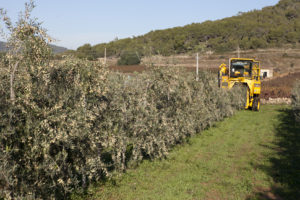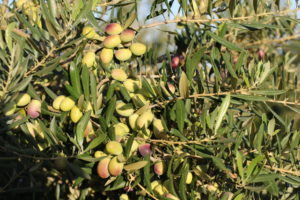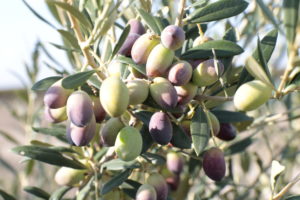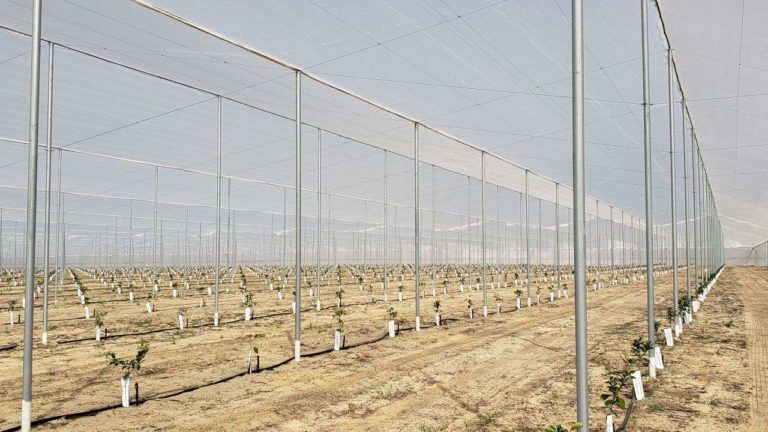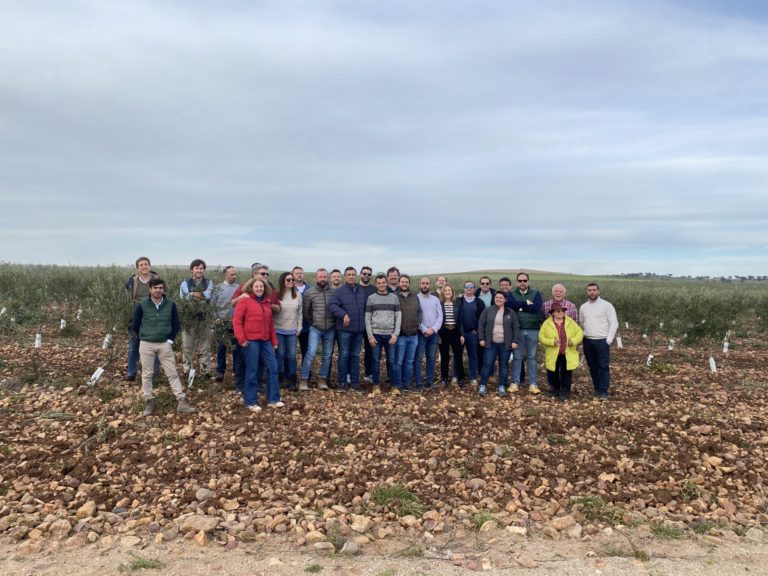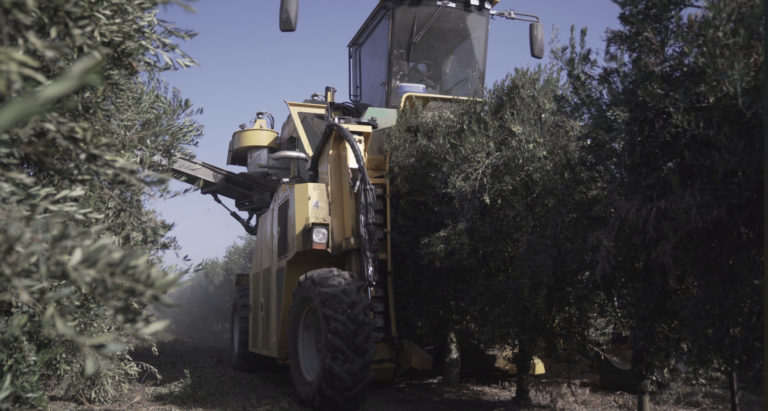Since its inception, hedgerow olive cultivation has provided substantial savings in harvesting costs and eliminated the need for labor in harvesting.
Back in the 90s, the system of hedge olive cultivation began its journey. Initially, it was met with great doubts and resistance, but gradually, it demonstrated the significant advantages it had to offer: substantial savings in harvesting costs and the complete elimination of the need for labor in harvesting. Additionally, it adopted varieties like “Arbequina and Arbosana,” which proved to be consistent in production and quite adaptable to different soil and climate conditions.
However, from its inception, the system indeed brought a disadvantage. It proposed to supply the sector with tons and tons of a single type of oil, which has been extracted from approximately 400,000 hectares planted worldwide. As we all know, the oil profile produced by a plantation depends on the variety, soil-climate conditions, and management. However, generally speaking, Arbequina and Arbosana varieties produce smooth, slightly fruity oils, with low bitterness/pungency and poor stability, losing much of their polyphenols and therefore stability before the 5th month.
This aspect was the negative side from the beginning, taking market share away from varieties that produce oils of very high value, such as Picual, Hojiblanca, Cornicabra, or Cobrançosa. This was the Achilles’ heel, the main point of attack against the hedgerow.
But as humanity has shown for millennia, it has creativity to spare, and from a problem, a solution, a change arises, and dynamism endures forever; the only certainty is that everything will change. And as a result, at the end of the same decade of the 90s, genetic improvement programs in olive varieties were initiated, both at the University of Cordoba and at the University of Bari (Puglia, Italy). Initially aimed at higher production of extra virgin olive oil per hectare, we finally understood that the great advantage they will bring will be to obtain oils like Picual, Hojiblanca, or Cornicabra but with the mechanized harvesting model with riding machines.
Through natural crossings, applying the pollen of a parent variety with a known parent on flowers of another known parent, and then enclosing that bouquet with bags that allowed the passage of light and air but not of other pollen grains, the first offspring were obtained. There were thousands of crossings between parents with sought-after characteristics (Picual, Koroneiki, Leccino, Coratina, Ayvalak, Frantoio, Arbequina, Arbosana,…), of these thousands, today we can say that only 4-5 have come to stay, but there will be dozens more coming in the coming years.
Crosses like Arbequina x Picual from UCO (Sikitita-1, Sikitita-2 and Martina), those of Arbosana x Leccino or Arbosana x Koroneiki from the university of Bari (Lecciana and Coriana), and those from the Todolivo Program of Arbosana x Koroneiki and Arbosana x Sikitita (I-15 and I-99 respect.) are some of the brightest today, but those from the University of Florence, those from the Balam program, etc., will follow.
Each with its attributes, which by the way are not easy to characterize; the same variety behaves differently under different climate and soil conditions, or management, even in the same estate but different years. Therefore, many years are needed to draw conclusive conclusions from them, but this time has already passed. Since the beginning of the new century, we have been conducting small tests throughout the Mediterranean, California, Chile,… and we already feel confident in making certain statements:
- Sikitita: Arbequina mother and Picual father, controlled vigor, like Arbequina or less. Consistent in production, it stands out especially in dry conditions, producing a slightly more stable extra virgin olive oil than Arbequina and Arbosana, similar in tasting to these.
- Lecciana: variety of Arbosana mother and Leccino father, relatively vigorous, can surpass Arbequina. In support irrigation conditions, dry, organic, cold climates, or fragile soils, it gives its best version, standing out against others. It produces a very round extra virgin olive oil, with a complex olfactory-gustatory profile and with polyphenols to ensure good stability. early harvest.
- Coriana: Arbosana mother and Koroneiki father, low vigor, good branching, it develops very well in irrigated conditions and good management that can feed its great capacity to generate oil within its fruits. The high fat yield it achieves relatively early and its bitter and spicy oil stand out, ideal for “reviving” oils that have become flat.
- I-15: same parents as the previous one (Arbosana x Koroneiki) but different result, it is a very fruity variety, very productive both in irrigation and dry conditions, giving very promising productions. With a vigor and growth form that facilitates training and pruning actions. early harvest.
- Sikitita-2: same as its older sister, comes from the cross Arbequina x Picual, similar vigor but giving a different oil, more stable (more polyphenols), and a very early harvest even before Lecciana and Sikitita.
The olive hedgerow in the world today represents no more than 6% of the world olive grove area, but it alreadygenerates approximately 30% of extra virgin olive oil.
At the rate plantations have been going in the last 10 years, it is not crazy to think that it will soon represent more than 50% of world extra virgin olive oil, and why not 70%? Do we really think that all that oil will be of a single typology of oils??, it seems clear that we need many other varieties that are suitable for riding machines but provide multiple oil profiles to satisfy a market accustomed to varieties like Frantoio, Coratina, Picual, Hojiblanca, etc.
This is just the beginning….

